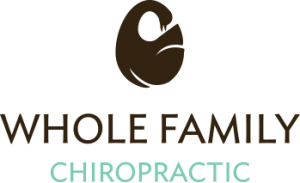If you’ve ever found yourself running from one appointment to the next—PT on Mondays and Wednesdays, OT on Tuesdays, speech therapy squeezed in on Fridays, sensory integration somewhere in between, plus a strict diet, vitamins, supplements, homeopathics, detox agents—then you know the overwhelm is real.
It feels like a full-time job. And when your child still struggles or plateaus despite all that effort, it’s easy to wonder: Am I failing? Am I missing something?
I want you to know—you’re not failing. In fact, the truth is this: you might actually be doing too much.
When More Isn’t Better
As parents, when our kids struggle, our instinct is to do more. More therapies. More supplements. More protocols. If one thing doesn’t work, we add another. And another.
But here’s the problem: your child’s nervous system may already be in overload. Just like a computer with too many windows open, the system slows down, freezes, or crashes. Even if each program is “good,” too many at once bogs the system down.
If your child’s nervous system is stuck in fight-or-flight (sympathetic dominance), it literally can’t take advantage of all the good things you’re trying.
Signs of Nervous System Overload
So how do you know if your child is stuck in fight-or-flight? Here are three big categories we look at in our office:
1. Gut & GI Issues
-
Chronic constipation
-
Trouble absorbing nutrients (still deficient despite supplements)
-
Persistent dysbiosis, parasites, or gut flora imbalance
2. Movement & Motor Delays
-
Rolling, crawling, or walking delays
-
Fine motor or coordination challenges
-
Tension, low tone, W-sitting, or toe-walking
3. Immune Weakness
-
Recurrent ear infections, sinus issues, or colds
-
Respiratory struggles (asthma, RSV, bronchitis, pneumonia)
-
Chronic inflammation or even autoimmune tendencies
At the root of these, we often find the same thing: a nervous system stuck in fight-or-flight.
The Healing Hierarchy: Why Sequence Matters
Your child’s nervous system works in a hierarchy. It prioritizes survival tasks—sleep, digestion, immune defense, movement—before higher functions like speech, focus, emotional regulation, or social interaction.
That’s why adding more speech therapy or behavioral work doesn’t always “stick.” The brain wants to learn, but the body hasn’t caught up.
Our 3-Phase Healing Approach
In our office, we walk families through a three-phase healing plan that resets the nervous system, supports core functions, and finally allows therapies to take hold.
Phase 1: Neurologically Focused Chiropractic Care
-
Helps calm the nervous system and shift out of fight-or-flight
-
Parents often notice: deeper sleep, easier pooping, less congestion, calmer moods, and more natural movement
Phase 2: Core Four Support
-
Once the nervous system is ready, we support sleep, gut, immune, and motor systems
-
This is where supplements, OT, PT, or targeted care become effective instead of overwhelming
Phase 3: Reintroduce Advanced Therapies
-
Speech therapy, ABA, or behavioral work
-
Now, instead of plateauing, kids finally make the progress parents hoped for
It’s not that therapies “didn’t work” before. It’s that the timing and sequence weren’t right.
How We Measure It
We don’t guess. We use neurological scans to measure:
-
Sympathetic dominance (fight-or-flight activity)
-
Nerve channels tied to gut, immune, and vagus nerve function
-
Stress patterns that may be blocking healing
When you can see the stress patterns clearly, it takes the guesswork out of your child’s healing journey.
You Don’t Have to Do It All
If you feel like you’re drowning in appointments and protocols, you’re not alone. And it doesn’t mean your child is broken—it usually just means their nervous system needs help first.
Once that foundation is reset, everything else starts to work better.
👉 If this resonates, take a look at our resources, explore our neurological scans, or reach out for a consultation. Sometimes, the most powerful step isn’t adding more—it’s finally starting in the right place.


